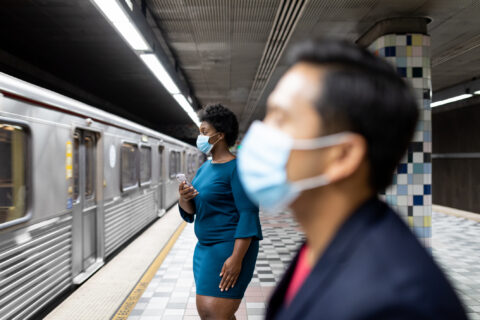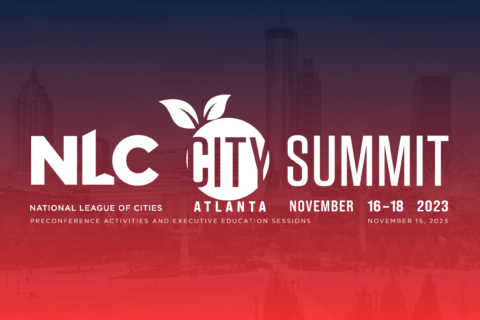While federal guidelines and resources establish standards for success, local policymakers have the best understanding of their communities; they know what’s needed, what works, who the major players are in the community, and how to customize policies to best support their constituents.
City leaders have been at the forefront of the COVID-19 pandemic, working both collaboratively and creatively across governmental partners to protect the health and safety of their communities. As city leaders across the nation continue to address COVID-19 concerns, they’re applying key lessons learned for how to build more resilient communities in the face of future public health threats along with ongoing social and economic challenges. Improving communication and coordination between local, county, state, and federal levels can assist local leaders in making decisions or implementing policies that work best for their communities in extraordinarily difficult times. Three key strategies that have emerged include:
Sharing Best Practices & Partnering with Each Other
The pandemic has provided numerous opportunities for city and local leaders to share best practices with each other, such as effective public health prevention policies, successful tools, and tactics for communicating with constituents, strategies for increasing compliance as COVID-19 fatigue set in, and new surveillance methods or data resources. For example, as fewer people opt to use PCR tests, wastewater surveillance has increased in importance as a way for cities to monitor case counts and community spread of the virus. Boston has successfully employed a wastewater surveillance system and can serve as a guide for other cities looking to implement similar strategies. One such strategy includes careful monitoring of wastewater from large indoor settings (e.g., schools, large workplaces) because these settings can act as “canaries in the coal mine” indicating when community spread is increasing. Another important learning is to ensure that communities most impacted by COVID-19 are being monitored and that baseline data is well understood.
City leaders working together through the pandemic have contributed to the development of strong and vital partnerships that should be maintained moving forward to protect communities against future surges or public health emergencies. For example, in Nevada, collaboration with all levels of government as well as private organizations and nonprofit partners, enhanced their ability to effectively reach Nevadans where they are, through trusted communication channels they were already accustomed to getting reliable information through. These partnerships were leveraged to communicate about COVID-19 testing, vaccinations, and treatment to ensure accurate and timely information was reaching as many people as possible.
Implementing Regional Cross-Jurisdictional Policies
During the pandemic, some cities came together to develop shared policies across jurisdictions. Along with consistent messaging around the rationale for important but politically-charged policies, this cross-jurisdictional policymaking can inspire confidence and compliance among constituents and communities. These shared policies may also act to provide a unified stance, with no one city or policymaker being solely responsible for making a tough, but necessary, call to protect the health and wellbeing of their constituents. Additionally, given how the virus spreads, bordering cities, counties, and states are really dependent on each other to respond to surges and new variants to prevent spread.
Working together in this way can make it easier to implement surge policies that are triggered by case counts, positivity rates, or other indicators, particularly when there are individuals and groups that may not be in favor of them. It will also reduce surge harm and protect families as the pandemic continues.
Coming Together to Share Feedback with County, State, and Federal Policymakers
At the beginning of the pandemic, a top-down approach predominated the COVID-19 response, with the federal government developing strategies, policies, and communications without gathering input from state and local leaders. This meant that guidance and decisions around resource allocation were too far removed from implementation settings. In response, cities and other jurisdictions came together and can continue to come together to provide consolidated feedback to higher levels of government around what financial, political, and data resources are needed at the local level to successfully respond to the COVID-19 pandemic and future public health emergencies. For example, cities across the California Bay Area were able to strengthen their relationships because they shared information up through the state, which in turn was relayed to the federal government in order to more effectively be responsive to the interventions and strategies that were necessary at the local level.
As cities aim to build more resilient communities amid the ongoing pandemic and beyond, there is potential for federal policy support and guidance, to ensure better alignment and potentially improve compliance and confidence in what cities are doing on the ground.
Working together, at different levels of government, is the way forward as communities continue to navigate an ever-evolving pandemic, as well as newer public health concerns such as monkeypox. Through collective action, city leaders can prepare for and address the ongoing pandemic and future public health threats to protect the health and safety of their communities.
About the Authors:
- Eduardo Cisneros, Director of Intergovernmental Affairs for COVID-19, White House Office of COVID Response
- Jorge Elorza, Mayor, Providence, Rhode Island
- Julia Raifman, Assistant Professor, Boston University School of Public Health
- Tim Robb, Director of Strategic Initiatives, Office of Governor Steve Sisolak
- Barbie Robinson, Executive Director, Harris County Public Health








